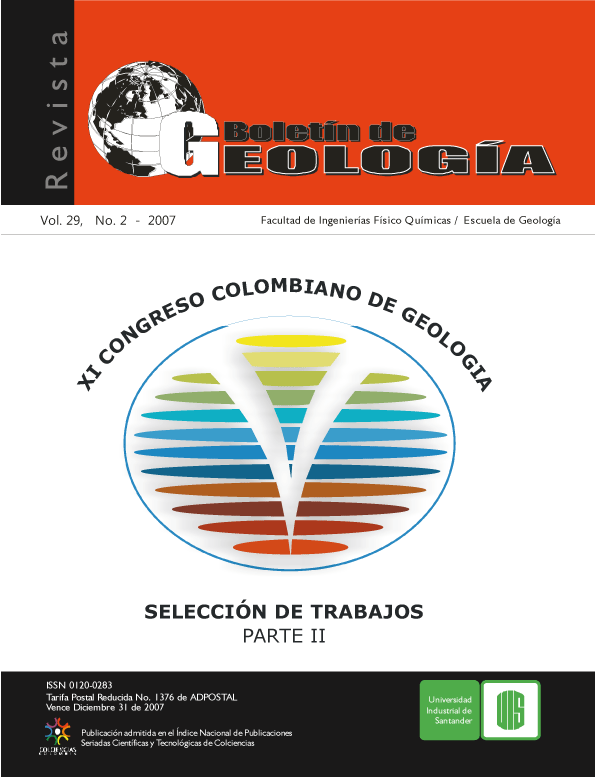MORPHOLOGY AND INTERNAL ARCHITECTURE OF A CHANGING CONTINENTAL SHELF: GULF OF MORROSQUILLO
How to Cite
Abstract
Acquisition of 50 bathymetry and high resolution profles (echosounder transducers of 200 and 12 Khz respectively) col-lected under the EAFIT-COLCIENCIAS project "Geomorphology of the shallow shelf of Departamento de Cordoba and Golfo de Morrosquillo" allowed mapping the morphology and stratigraphic architecture of the inner shelf (depths < 10 m) seafoor and sub-seafoor under Gulf of Morrosquillo. The morphology of the inner shelf, as depicted on a bathymetry map based on 200 kHz soundings, appears broadly as a concave up, largely erosive surface that reaches the 10 m isobath at distances of 2 and 3.5 km from the shoreline. At several localized sites (such as in the NE of the study area), echosounder data provide evidence of positive terrain anomalies, apparently corresponding to recent mud volcanoes of well preserved tops tens of meters across, or recently faulted. The 12 kHz records, which offer a vertical resolution of 30 to 80 cm, were able to penetrate 5 m below the seafoor at various places, and allowed recognition of several buried erosional and deposi-tional features including scarps, angular unconformities, and flled paleochannels. These seafoor and subseafoor features are evidence of an extremely active Holocene dynamics, with important eustatic and tectonic components.
Keywords: Continental shelf, high resolution Geophysics, Holocene, coastal geomorphology.
Downloads
References
Correa, I.D., González, D.A., Toro, M.I., Ríos, A.A., y Ojeda, G.Y. (2007). Erosión Litoral Entre Arboletes Y Berrugas, Litoral Caribe Colombiano, Memorias del XI Congreso Colombiano de Geología, Bucaramanga
Duque-Caro, H. (1984). Structural style, diapirism, and accretionary episodes of the Sinu–San Jacinto terrane, southwestern Caribbean borderland, in W. E. Bonini, R. B. Hargraves, and R. Shagam, eds., The South American–Caribbean Plate boundary and regional tecton-ics. Geological Society of America Memoir 162, pp. 303–316
Ercilla, G., Wynn, R.B., Alonso, B., y Baraza, J. (2002). Initiation and evolution of turbidity current sediment waves in the Magdalena turbidite system, Marine Geology, Vol. 192, pp. 153-169
Ercilla, G., Alonso, B., Estrada, F., Chiocci, F., Baraza, J., y Farran, M. (2002). The Magdalena Turbidite System (Caribbean Sea): present-day morphology and architecture model, Marine Geology Vol. 185, pp. 303-318
Flinch, J. F. (2003). Structural evolution of the Sinu-Lower Mag-olution of the Sinu-Lower Mag-dalena area (Northern Colombia), in C. Bartolini, R. T. Buffler, and J. Blickwede, eds., The Circum-Gulf of Mexico and the Caribbean: Hydrocarbon habitats, basin formation, and plate tectonics: AAPG Memoir Vol. 79, pp. 776–796.
